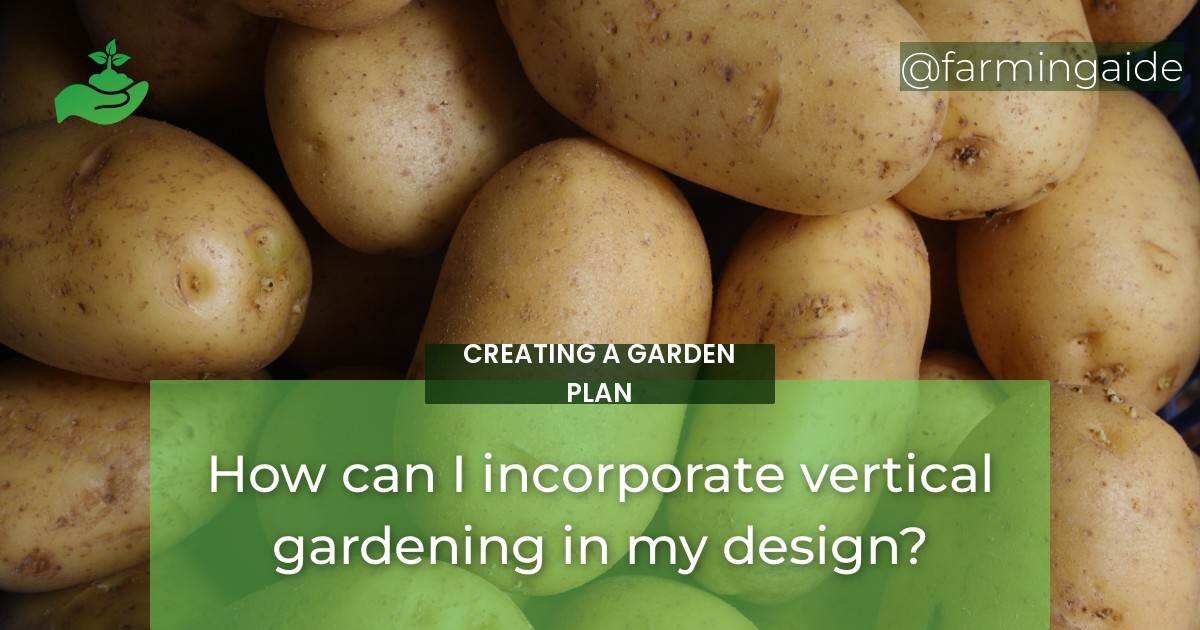Vertical gardening is an innovative way to incorporate greenery into your garden design without taking up too much space. This technique involves growing plants vertically using different structures such as trellises, planters, and hanging baskets. It is an excellent option for small gardens or limited outdoor spaces. Incorporating vertical gardening into your garden plan is relatively easy and can be achieved with a little creativity and imagination. In this article, we’ll explore the benefits of vertical gardening, ways to maximize small spaces with vertical gardening, choosing the right plants for vertical gardening, design ideas for vertical gardens, and maintenance and care of vertical gardens.
Benefits of Vertical Gardening
Vertical gardening has numerous benefits that make it an attractive option for garden enthusiasts. Here are some of the advantages of incorporating vertical gardening into your garden plan:
- Maximizes small spaces
- Enhances privacy
- Improves air quality
- Increases accessibility and ease of gardening
- Reduces the risk of pest and disease infestation
- Creates visual interest and adds a unique touch to your garden design
Maximizing Small Spaces with Vertical Gardening
Small gardens or limited outdoor spaces can be discouraging, especially if you’re passionate about gardening. However, with vertical gardening, you can maximize your available space and create a lush green wall. Here are some ways to incorporate vertical gardening into small spaces:
Utilizing Trellises
Trellises are excellent structures for supporting climbing plants and vines. You can attach a trellis to a wall or fence and grow different types of plants such as cucumbers, tomatoes, and grapes. Trellises are easy to install and maintain and can add a beautiful touch to your garden design.
Installing Vertical Planters
Vertical planters are perfect for small spaces. They allow you to grow plants vertically using multiple tiers. You can affix them to a wall or fence or set them up on a patio or balcony. Vertical planters come in different shapes, sizes, and materials, and you can grow a variety of plants such as herbs, flowers, and vegetables.
Hanging Baskets
Hanging baskets are an excellent way to add a touch of color to your garden design. They are perfect for small spaces and can be hung from a bracket or hook. You can grow different types of plants such as petunias, fuchsias, and begonias in hanging baskets.
ALSO READ
Choosing the Right Plants for Vertical Gardening
Choosing the right plants for vertical gardening is essential for the success of your garden design. Here are some plants that are perfect for vertical gardening:
Vines and Climbing Plants
Vines and climbing plants are excellent for vertical gardening. They can grow vertically using structures such as trellises, arches, and pergolas. Some popular climbing plants for vertical gardening include clematis, morning glory, and honeysuckle.
Compact and Dwarf Varieties
Compact and dwarf varieties of plants are perfect for small spaces and vertical gardening. They are ideal for growing in containers or vertical planters. Some popular compact and dwarf plants for vertical gardening include cherry tomatoes, dwarf sunflowers, and dwarf roses.
Design Ideas for Vertical Gardens
Designing your vertical garden can be a fun and creative process. Here are some design ideas for vertical gardens:
Creating a Living Wall
A living wall is a beautiful and unique way to incorporate vertical gardening into your garden design. It involves creating a vertical garden on a wall using different plants such as ferns, succulents, and herbs. You can use a modular system or create a DIY living wall using a trellis or wire mesh.
Adding a Vertical Garden to a Fence
Adding a vertical garden to a fence is an excellent way to enhance privacy and create a green wall. You can use a trellis or planters to grow different types of plants such as ivy, climbing roses, and hydrangea.
Vertical Gardening in Containers
Vertical gardening in containers is perfect for small spaces and limited outdoor areas. You can use different types of containers such as pots, planters, and hanging baskets to grow herbs, flowers, and vegetables. Vertical gardening in containers is easy to maintain and adds a beautiful touch to your garden design.
ALSO READ
Maintenance and Care of Vertical Gardens
Maintaining and caring for your vertical garden is essential for its success. Here are some tips for maintaining and caring for your vertical garden:
Watering and Irrigation
Watering and irrigation are critical for the growth and health of your plants. Ensure that your plants receive adequate water and that the soil is well-drained. You can use a drip irrigation system or a hose to water your vertical garden.
Pruning and Training Plants
Pruning and training your plants are essential for maintaining their shape and preventing overgrowth. Ensure that you prune your plants regularly and train them to grow in the desired direction.
Can I Use Vertical Gardening to Grow Edible Plants in My Ornamental Garden Design?
Yes, you can absolutely use vertical gardening to grow edible plants in an ornamental garden. Utilizing trellises, hanging baskets, or vertical planters, you can incorporate edibles like herbs, strawberries, and lettuces into your ornamental garden design. This allows for both beauty and functionality in your outdoor space.
Conclusion
Incorporating vertical gardening into your garden plan is an excellent way to add a unique and beautiful touch to your outdoor space. It maximizes small spaces, enhances privacy, and adds visual interest to your garden design. By utilizing different structures such as trellises, planters, and hanging baskets, choosing the right plants, and maintaining and caring for your vertical garden, you can create a lush green wall and enjoy the benefits of vertical gardening.
RELATED ARTICLES:


